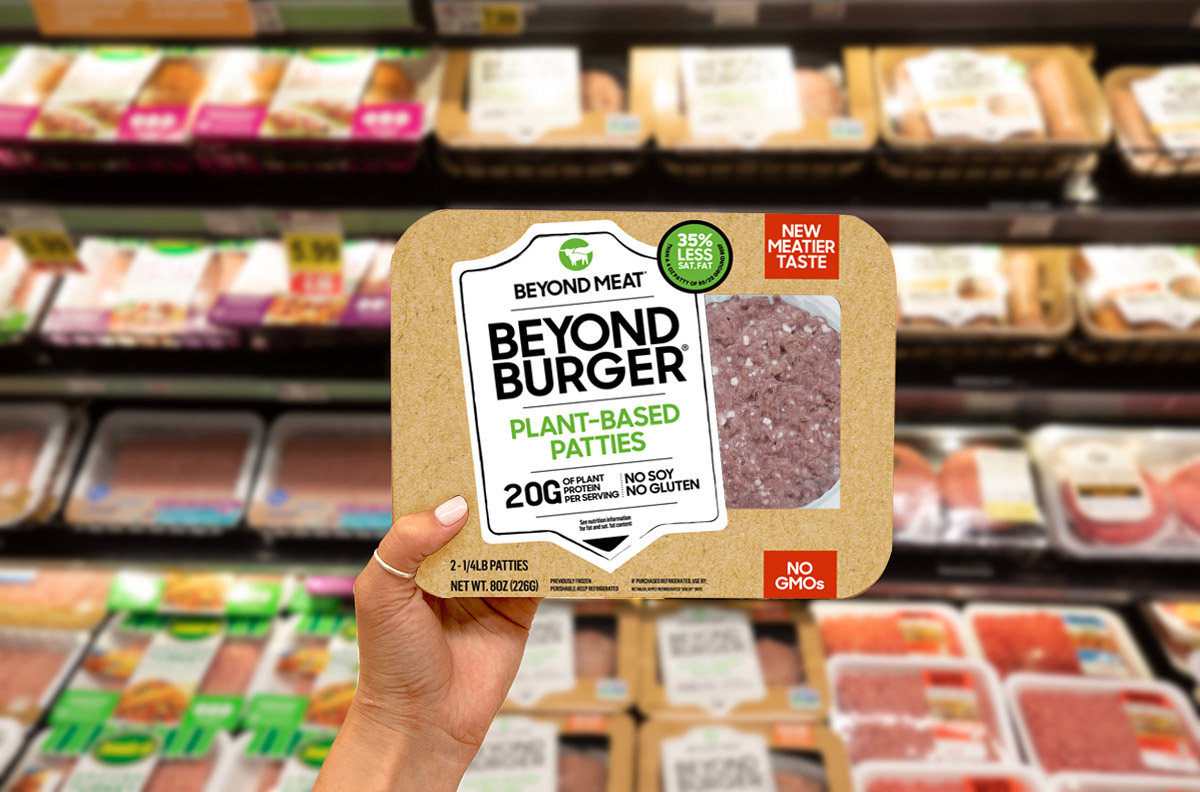Beyond Meat's (BYND 1.48%) share price has more than doubled this year, even as the general market struggled amid the coronavirus outbreak.
The maker of plant-based meat alternatives has taken investors on a wild and mostly positive ride since the initial public offering a year ago. The stock surged over 160% in its first day of trading in May of last year. And in in just two months, the shares skyrocketed another 255% to about $234. These days, they're trading about 32% lower than that record high.

Image source: Getty Images.
Triple-digit revenue gains and a booming food service business have fueled investor optimism, along with a growing market for plant-based protein. The question is whether such sales growth -- and stock performance -- can continue a decade from now.
Let's have a closer look at what has brought Beyond Meat to this stage and what might be on the horizon.
Lunch at Subway
Excluding the most recent quarter, Beyond Meat has consistently reported quarterly revenue growth of more than 200% since its IPO. And you can now bite into a Beyond Meat product when you stop for lunch at Subway, Denny's, and other well-known restaurant chains. Earlier this year, even fast-food giant McDonald's tested a plant-lettuce-tomato sandwich using Beyond Meat's plant-based meat alternative, though no deals have been made for a permanent menu item. Food service represented about half of Beyond Meat's revenue last year.
The company began to feel the impact of the coronavirus crisis late in the fiscal first quarter with a decline in sales to food service customers. The temporary shutdown of many restaurants -- and the fact that stay-at-home orders kept diners at home -- hurt sales in this segment.
Still, revenue climbed 141% year over year during the quarter. And even if we see further deterioration in the current quarter, there isn't reason to worry. The coronavirus outbreak is likely a temporary event, and Beyond Meat's growth can return to its historical levels once the crisis has passed.
That said, I wouldn't bet on quarterly sales gains of more than 200% over the next decade. Why? Competition is coming from all directions. First, we have the big food players that recently entered the market, including former Beyond Meat investor Tyson Foods, which launched its own plant-based meat product line called "Raised & Rooted" last year. Perdue Foods, Nestle, and Kellogg have also entered the market.
Impossible Foods at Disney
Then we have the rival that, like Beyond Meat, is a plant-based meat alternative specialist: Impossible Foods. The company sells its alternative-protein products to restaurants, in grocery stores, and even directly to consumers through its website. In February, Walt Disney theme parks and cruises became the latest places where you can dig into an Impossible Burger.
While those various players represent competition now and likely into the future, there also are those that might challenge Beyond Meat 10 years from now. Startups like Memphis Meats, Meatable, and others are developing meat alternatives through the cultivation of animal cells. Meatable aims to have its product launched by 2025.
There is room for several players if analysts are right about demand. The plant-based protein market will reach $85 billion by 2030, according to a UBS report last year. That's up from almost $5 billion in 2018.
Still, with many plant-based options out there, it will be difficult for any single company to maintain high prices, and therefore, margins may be at risk. Impossible Foods recently cut prices to distributors by about 15% and has vowed to eventually undercut the price of traditional ground beef.
Beyond Meat, too, has goals to work on pricing. In its most recent earnings call, the company said it aims for price parity with animal protein in at least one product category by 2024. Beyond Meat said it will achieve gross margin improvements through internalization of manufacturing, packaging cost cuts, and better supply chain logistics among other efforts. Still, research and development investment continues to be a priority, with those expenses growing each quarter.
| Metric | Q1 2020 | Q4 2019 | Q3 2019 | Q2 2019 |
|---|---|---|---|---|
| R&D Expenses (YOY Growth) | 38% | 80% | 175% | 69% |
And for full-year 2019, R&D spending more than doubled to about $21 million. That's about 20% of the company's gross profit for the year.
What will happen a decade from now?
While it's important to innovate, especially in a market with so many competitors and potential competitors, I'm not so sure it will result in Beyond Meat standing out among the others a decade from now, especially if pricing is higher than that of other alternative protein companies.
If prices match those of competitors, Beyond Meat may hold onto its market leadership, as it has the advantage of being among the first to make a splash in the space. But in that case, many questions remain. Will Beyond Meat be able to maintain attractive margins through efficiencies? Will sales volume make up for lower pricing? Will people prefer the taste of Beyond Meat's burger or protein developed in another manner, such as the cultivation of animal cells?
It's too early to answer those questions. But with the growing number of rivals, it does seem likely that 10 years from now, competition may eat away at Beyond Meat. Still, while I think competition represents a real risk in the future, Beyond Meat shares have further to go in the coming year as the company continues to expand. Just this week, the stock surged 20% in one trading session after Beyond Meat said Sinodis, a leading distributor of imported foods in China, would distribute its products. And that's good news for investors with a shorter investment horizon.











